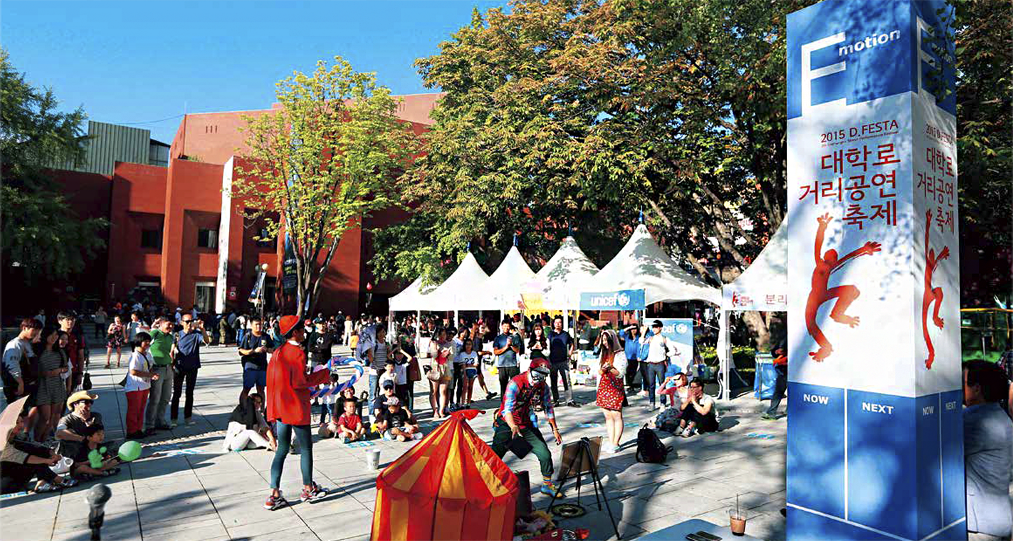
This is Marronnier Park in Daehangno, a street in central Seoul. An actor in a red hat and red jacket is performing in the middle of the square. Is he a magician, perhaps? A crowd soon starts to gather around him. It’s a street festival. On this street, every day, every moment is a festival. But peel back just oneof the exuberant exterior, and a slice of Korea’s modern history is revealed.
This northeastern section of the historic center of the capital city is home to countless small theaters clustered cheek by jowl, including Arko Arts Theater of the Arts Council Korea. The Daehangno area, stretching 1.5 kilometers in either direction from Hyehwa Subway Station, is a state-designated cultural zone. It’s an area with a rich history, boasting proximity to such historical sites as Mt. Nak rising to the rear, and Changgyeong Palace, Changdeok Palace, and Jongmyo Shrine, all located within walking distance.
The name Daehangno, which literally means “university street,” comes from the fact that Seoul National University, Korea’s first modern university, was established here in 1946. In 1961, I entered the university’s College of Liberal Arts and Sciences as a French literature major. In the background where the red brick Arko Arts Theater can be seen, that’s the site of the classical beige brick building which housed the university library and the offices of many professors. And that’s where I first read L'Étranger (“The Stranger”) by Albert Camus. In front was a grove of zelkova trees. The path running through the lawn, redolent with the scent of lilacs, led to the university’s front gate. From there, crossing the bridge over the stream in front, which we called “the Seine” as we dreamt of Paris so far away, led to the road that is called Daehangno today. Across the road, the Seoul National University Hospital and College of Medicine still stand in the same place.
The old brick building was also the place where I gave my first and last lecture at my alma mater after returning from my study in France in the autumn of 1974. In 1975, Seoul National University was relocated to a vast new campus on the southern outskirts of the city, and the old campus area became the youth and culture center of Seoul.
That’s not all. Before the establishment of Seoul National University, this is where Keijo Imperial University’s College of Law was founded by the Japanese government-general in 1924. The two giant trees at the very back of the photo are the horse chestnut (marronnier) trees planted in 1927 by Ueno Naoteru, a professor of aesthetics at the school, who brought them here from France. It is these trees that gave Marronnier Park its name. The actor in the red hat, would he be aware of the archaeological magic of time and history that is part of this square?